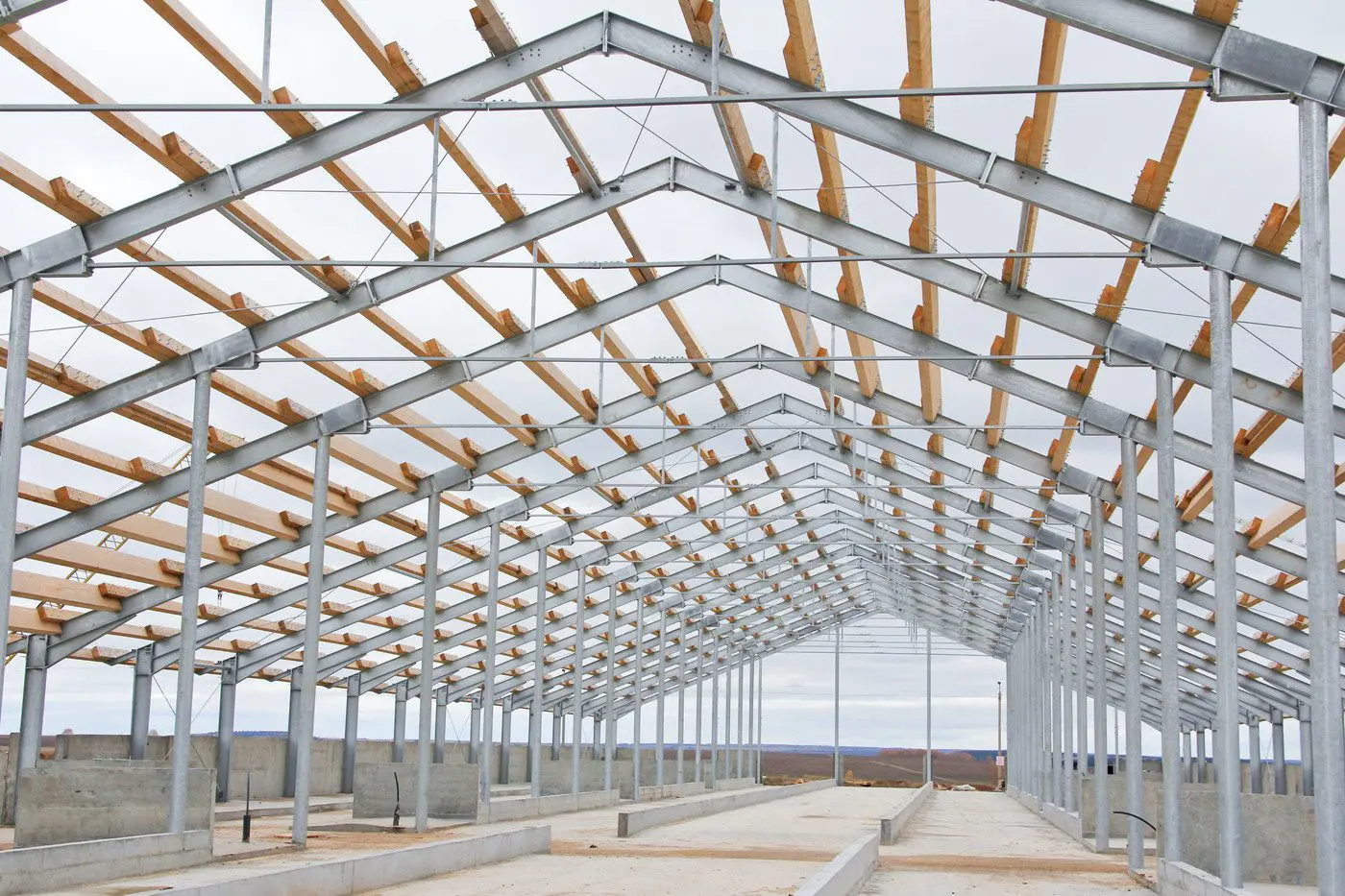Agricultural steel buildings project
An agricultural steel buildings project involves designing and constructing structures specifically tailored for agricultural purposes using steel as the primary building material. These buildings are essential for various agricultural activities such as storage, livestock housing, machinery sheds, processing facilities, and more. Steel offers numerous advantages that make it ideal for agricultural buildings, including durability, versatility, cost-effectiveness, and customization options.

Advantages of Steel Trusses:
1. Strength and Durability:
Steel trusses are engineered to provide exceptional strength and durability, capable of supporting heavy roof loads over long spans without sagging or bending.
They offer superior resistance to weather elements, such as wind and snow loads, making them suitable for various climatic conditions.
2. Design Flexibility:
Steel trusses allow for greater design flexibility compared to traditional timber trusses. They can accommodate various roof shapes and architectural styles, including gable, hip, gambrel, and complex geometric designs.
This flexibility enables architects and designers to create innovative and visually appealing roof structures.
3. Lightweight:
Despite their strength, steel trusses are lightweight, which simplifies handling and transportation during construction. It also reduces the overall load on the building structure.
4. Speed of Construction:
Steel trusses are often prefabricated off-site, ensuring precision manufacturing and faster installation on-site. This speeds up the construction process and reduces labor costs.
5. Fire Resistance:
Steel is non-combustible, offering inherent fire resistance compared to wood trusses. Steel trusses can help contain fires within the structure, enhancing overall building safety and potentially lowering insurance premiums.
6. Longevity and Low Maintenance:
Steel trusses have a longer lifespan and require minimal maintenance compared to timber trusses. They are resistant to pests, rot, and decay, ensuring prolonged structural integrity.
7. Energy Efficiency:
Steel trusses can accommodate effective insulation systems, improving the energy efficiency of buildings. Proper insulation reduces heating and cooling costs, enhancing overall thermal performance.
8. Environmental Sustainability:
Steel is a highly sustainable material with a high percentage of recycled content. Steel trusses are recyclable at the end of their service life, contributing to environmental conservation and reducing construction waste.
Applications of Steel Trusses:
• Residential Buildings: Steel trusses are commonly used in single-family homes, townhouses, and apartment complexes for their strength and design flexibility.
• Commercial and Industrial Buildings: They are suitable for warehouses, factories, retail centers, and institutional buildings requiring large clear spans and robust roof support.
Choosing Steel Trusses:
When selecting steel trusses for your building, consider factors such as:
• Load Requirements: Determine the roof load requirements, including snow and wind loads, to ensure the steel trusses can support the specified loads over the intended span.
• Design Specifications: Work with an engineer or architect to specify the appropriate truss design parameters, roof pitch, and architectural details.
• Manufacturer Reputation: Choose a reputable manufacturer or supplier with experience in designing and fabricating steel trusses. Verify that the trusses meet industry standards and regulatory requirements.
• Installation Expertise: Ensure that the contractor or installer has experience in erecting steel truss systems and follows safety protocols during installation to ensure structural integrity and performance.




